The content of the article
Correctly performed procedure of combing activates metabolic processes, enriches hair with oxygen, eliminates unnecessary dust accumulations. Of course, all this affects the aesthetic appearance of the hair and the good mood of their owner. Like any other type of care, the process of combing begins with the correct selection of tools.
Kinds of comb in shape
- Double-sided brush. The tool is a 2-in-1 comb, with natural bristles on one side and plastic, metal or wood on the other. Natural pile is designed for laying and modeling of wet strands, artificial teeth are used for daily combing.
- Massage brush. The tool is oval or square in shape with vertically spaced teeth.Brush accelerates blood circulation, massages the scalp, awakens the follicles. The hairbrush makes hair silky and obedient. It distributes the secretion of subcutaneous fat throughout the length, preventing the effect of mixed type hair.
- Classic comb. This type of brush is made from natural bristles with artificial inserts. They can be wooden, plastic and silicone. The tool is suitable for combing wet strands, because it differs by careful attitude to the head of hair. Classic hairbrush - a great option for hair extensions.
- Universal round hairbrush. This type of brush is a good option for curly hair. She pulls curls, straightening and fixing them in one position. The tool is made of natural lint with plastic inserts. The teeth intertwine, creating a good grip, due to which the hair does not curl back when blow-dried.
- Brashing Round comb cylindrical shape. The teeth are evenly spaced, so they are equally obedient curls. The comb allows you to create curls of any diameter.
Types of combing material
- Metallic. They are durable and easy to use. Strongly not suitable for dyed and wet hair.
- Wood. The tool is made of birch, oak or juniper. All components are exclusively natural, due to which good care is provided to all types of hair, regardless of length. Wooden combs and brushes eliminate the statistical effect, eliminate dandruff and give the hair a pleasant smell.
- Plastic. Hairbrushes are not suitable for regular use, because they create an excessive statistical effect, breaking and injuring strands. Differ in low cost and ergonomics. When choosing such a tool, give preference to options with carbon or silicone teeth.
- Turtle shell. One of the most expensive comb. The ingredients are similar in composition with natural curls, so do not cause damage to the hair. Negative feature is fragility and fragility. If at least one prong breaks, it will traumatize the hair and scalp by forming burrs.
- Brushes with bristles. Tools are soft and hard, natural and nylon.Natural products are very difficult to care for, they absorb sebum, dust and dirt, but are great for oily hair.
How to choose a hairbrush
Manufacturers produce so many different brushes and combs that many girls are lost. Hairbrushes should be bought only in professional stores of hairdressing accessories. These boutiques give a guarantee on their products, due to which every girl can be sure that she will get a good product at the appropriate price.
Ladies with excessively thick and lush hair are advised to purchase a massage brush with a pile of various lengths. Tools are usually made from natural bristles in combination with plastic teeth. A flat comb with rare teeth and a massage brush, but without additional artificial inserts, is suitable for medium-sized hair.
If you have fragile, dull and lifeless curls, give preference to soft hairbrushes with elastic teeth. They are both natural and artificial. As a rule, these tools are accompanied by silicone inserts in the middle and on the sides.Such brushes accelerate blood supply and awaken the bulbs, due to which the hair becomes healthy and shiny with regular proper care.
As for the crests of turtle shell and wooden hair, they are designed for oily hair. Ladies with curly and curly hair is better to choose combs with sparse and wide teeth of natural materials. This option is preferable to you, because these tools do not share the strands, so the original form of hair is preserved.
Long-haired beauties will use a massage brush with natural bristles with or without additional inserts. Hairbrushes of this type neutralize electrification and do an excellent job with the task.
Girls with short hair should prefer wooden or plastic combs. They allow you to comb the hair from the roots to the ends and contribute to the even distribution of cosmetics.
Important!
- When choosing a comb or massage brush, pay attention to the presence of tips on each tooth. They do not injure the scalp and well comb wet hair.
- Before you buy, be sure to run your hand over the teeth. They should not scratch or traumatize the skin.
- If you decide to give preference to combs with the presence of wooden inserts or combs made of such material, check for any burrs.
- With regards to silicone, rubber and plastic inserts, they should not be defective and broken.
How to comb your hair
The recommended frequency of the procedure varies from 2 to 3 times per day. The rest of the time you only need to fix your hair by hand, adjusting the shape. To add shine and elasticity to hair, professionals recommend combing them in the open air (balcony, loggia).
Fragile and dry hair comb more often (about 4 times), observing accuracy. Mixed and prone to greasy hair, less often, so as not to provoke the accelerated work of the sebaceous glands. At the same time for the latter it is important not to touch the scalp, so as not to distribute the fat over the entire surface of the hair. For a normal type of hair, combing in the morning and evening is enough.
To properly comb the strands run over them several times with a brush or comb, ranging from tips to roots.After that, make several hand movements on the entire surface of the head of hair, excluding the statistical effect. At the end of the procedure, smooth your hair with your palms for a few minutes, moving slowly and smoothly.
Long-haired young ladies are more difficult, because the curls are often confused among themselves. Head down, gather the hair in your hand and squeeze them in the middle. First, comb the strands from the tips to the middle with a comb with rare teeth, then take a massage brush and repeat the manipulations. Release the hair and move to the root zone, carefully processing the curls.It is important to understand that with high blood pressure for a long time it is impossible to linger at the lowest point.
Now you know how to carry out the procedure of combing correctly, as well as what type of brush to choose. Wet strands of combing is not recommended, but if the need arises, carry out the procedure carefully. Dry the curls with a towel, use a comb with rare and natural teeth, do not use an iron brush.
Video: how to comb hair

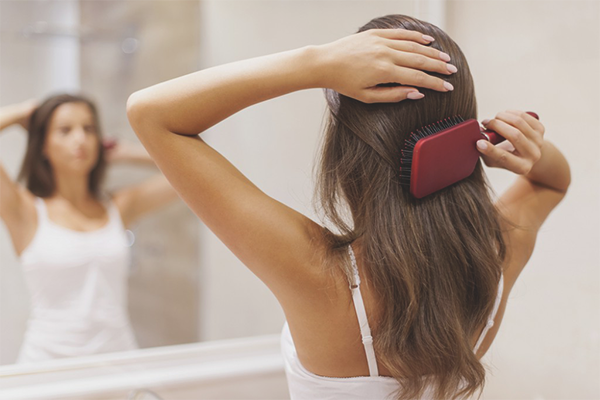
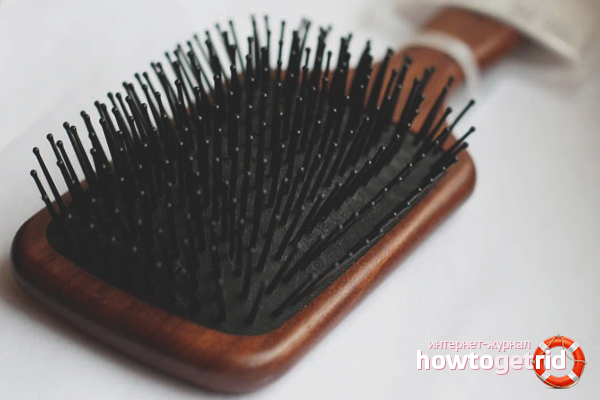



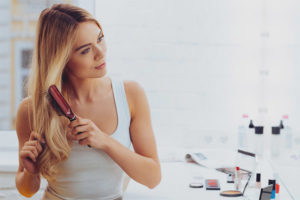


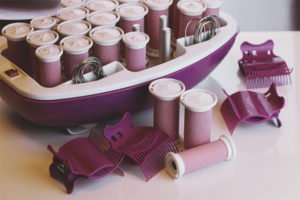
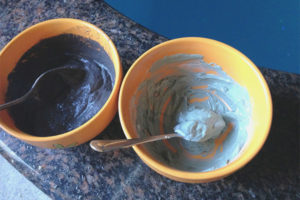
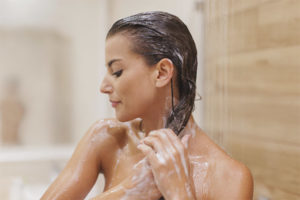
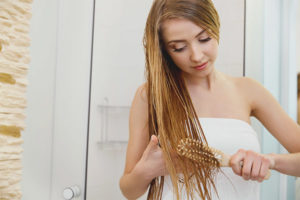
To send